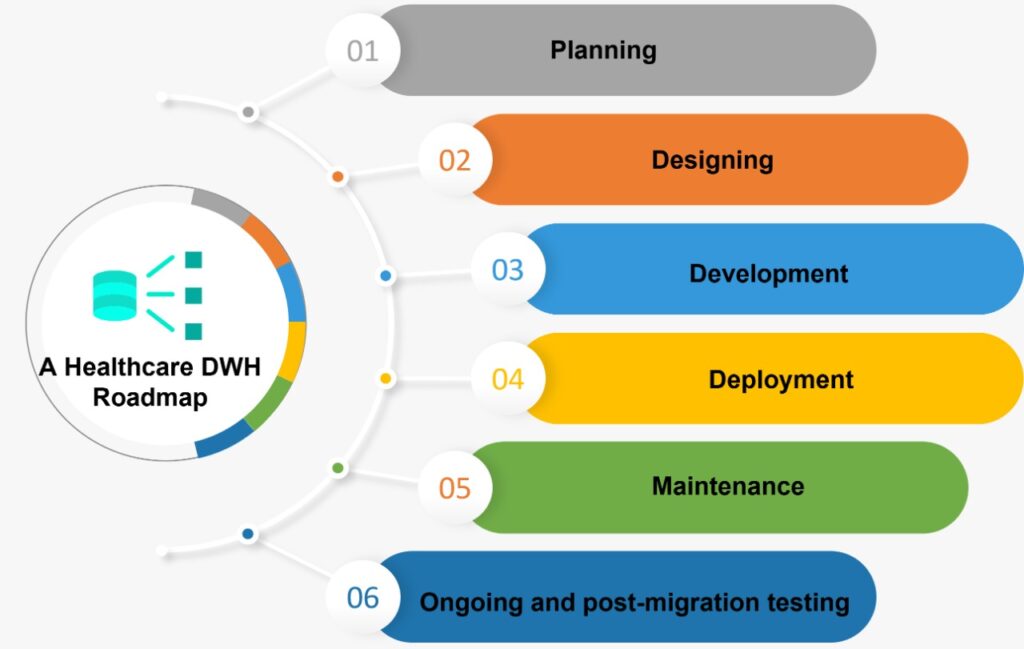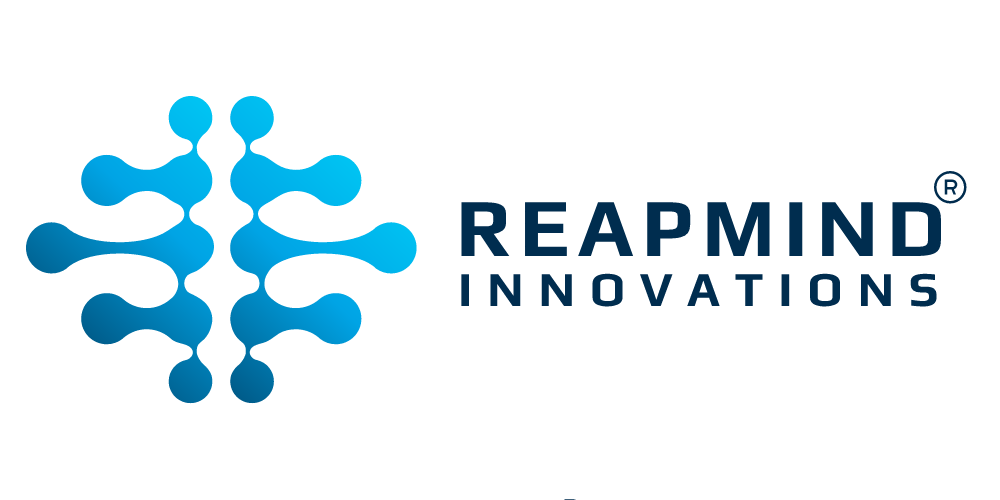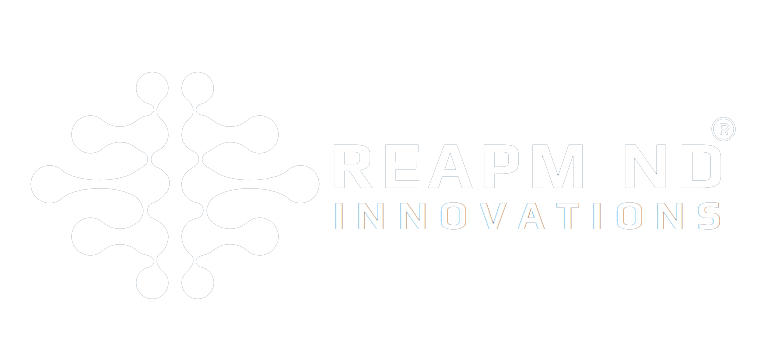Why your medical organization cannot sustain far without a healthcare data warehouse?
Table of Contents
ToggleMedical organizations are using vast amounts of healthcare data to address problems with care quality, healthcare costs, patient satisfaction, and operational inefficiencies.
Healthcare providers are setting up their own data warehouses due to the demand for healthcare analytics. Organizations eventually use data through data warehousing technologies to enhance clinical outcomes, patient experiences, and administrative tasks
The complexity of data warehousing procedures and the sheer volume of diverse healthcare data sources make it difficult to develop data warehouses in the healthcare sector. Therefore, DWH projects in the healthcare industry frequently require years to complete and come at a high cost.
A lot of data are handled by healthcare providers. This data is frequently stored among numerous outdated systems with poor interoperability. Data inconsistencies not only take up doctors’ time (estimate: nine hours per week), but they also affect the standard of care. You know it better than anyone: the first step to a proper diagnosis and efficient treatment is to paint a complete picture of what a patient has and is experiencing in terms of their health.
Medical organizations have long relied on data management and data analytics providers to combat healthcare data disparities. What is the goal? Bring siloed data into a single, consolidated storage location — a healthcare data warehouse — and use it to generate insights.
In order to streamline and simplify the development of complex data warehouses, this blog introduces the fundamentals of the healthcare data warehouse, including DWH architecture design, key features, and a beginner’s roadmap for its implementation.
What is a healthcare data warehouse?
A healthcare data warehouse acts as a central repository for all the medical data gathered from various sources, including wearables, radiology and lab databases, enterprise resource planning systems, and electronic health records (EHR). The data in the warehouse is transformed to fit unified formatting so it can be used for analysis without further preparation.
Highlights of the healthcare warehousing market
According to a study by BlueWave Consulting, the global market for healthcare data storage is expected to grow at a CAGR of 10.7% from $3.08 billion in 2020 to $6.12 billion by 2027. The following factors are the main causes of the increased interest in data warehousing solutions among healthcare industry players:
- The increase in digital data volumes produced by healthcare organizations EMR, EHR, and CPOE are being used more widely.
- The widespread use of medical devices that are connected and produce streaming data
- The demand for increased operational efficiency raised by COVID-19
As a result, healthcare organizations around the world are increasingly investing in data warehousing solutions. They aim to alleviate the challenges associated with managing ever-increasing amounts of clinical data and achieve greater operational efficiency by utilizing predictive analytics, prescriptive analytics, and clinical process automation.
A value proposition for a healthcare data warehouse
A healthcare data warehouse benefits a medical organization in three main ways:
Automation and digitization Healthcare providers can streamline and even automate stakeholder journeys by having quick access to all types of healthcare data, including insurance claims, admission forms, and lab test results.
Innovation. Healthcare organizations can implement new use cases in the areas of predictive analytics, prescriptive analytics, and the Internet of Medical Things by leveraging the capabilities of centralized data storage.
Accomplishing strategic goals. Healthcare facilities can increase the quality of healthcare services, reach more patients, and offer a wider range of care delivery options by freeing up the time of doctors, accelerating healthcare operations, and using the insights gained from analytics.
Here are a few examples of how medical institutions could use a clinical data warehouse and its accompanying analytics tools to take advantage of the possibilities mentioned above:
- Clinicians can identify best practices for diagnosing and treating illnesses and chronic conditions by analyzing the data gathered from multiple doctors. Identifying doctors whose patients experience better outcomes and going in-depth at the patient level can aid in the development of treatment protocols that are more successful.
- When all patient information is available in one location, doctors can create more individualized care plans.
- Transparency of anonymized clinical results may promote collegial competition and collaboration, inspiring healthcare professionals to provide high-quality care.
- It may be possible to respond to patients’ needs more quickly by utilizing ongoing patient feedback loops.
- Clinicians can evaluate the efficacy of screening techniques to support the transition to preventive care.
- In order to foresee epidemics and the worsening of chronic conditions, doctors can track the population’s health over time.
- A healthcare institution’s administration could improve financial management, develop benchmarks against which performance could be measured, and facilitate other administrative tasks.
- Hospitals and other medical institutions can profit from improved reporting opportunities for internal management and external audits, including regulatory compliance checks.
The Architecture of Data Warehouses for Healthcare Providers
Understanding a healthcare data warehouse’s fundamental layers is essential before developing one. The following layers make up an architecture for an enterprise data warehouse that can meet healthcare intelligence and analytics needs:
Data Source Layer
This consists of internal and external data sources that contain information important to healthcare providers. The various types of data used in healthcare can come from sources like ERP systems, EHR reports, radiology reports, prescriptions, CRM systems, claim management systems, and surveys.
Staging Layer
Data from the various data sources are processed and stored temporarily in a staging area. Here, large swaths of data are transformed, cleaned up, and prepared using ETL (extract, transform, and load) processes for centralized storage and analysis.
Data Storage Layer
Data storage serves as a centralized location to store data that has been loaded using ETL and ELT procedures. It stores and maintains structured data for reporting and analytics. Data marts, which are DWH subsets created for particular business sectors like HR, Finance, Technology, Operations, etc., can also be carried by the data storage layer.
Analytics and Reporting Layer
Data analytics and business intelligence tools are used in this last layer to extract useful information from data. With the help of detailed reports, visualizations, graphs, charts, and summaries, BI tools can access data from the healthcare data warehouse and share analytics and insights.
Key features of a Healthcare Data Warehouse
In order to deliver healthcare and provide patient-centered care, providers can adopt a value-based strategy with the help of a strong healthcare data warehouse. The healthcare DWH must, however, adhere to certain standards in order to be effective. Furthermore, due to the sensitive nature of this information, it must be handled with care and accuracy.
Here are a few essential features that every healthcare data warehouse needs to prioritize.

Data Warehouse Performance
Fast querying and retrieval of data that is ready for analysis are essential capabilities of full fledge healthcare data warehouses. The following characteristics show how well data warehousing processes work:
Powerful parallel processing
Data warehouses can divide labor-intensive querying tasks into manageable, parallel-processable units with the help of parallel processing.
Data Warehouse Automation
Powerful data warehouse automation tools, like Astera DW Builder, can automate entire data pipelines within a DWH architecture to decrease time-to-market. With automation, data is processed and transferred automatically by the data warehouse from the source to the data storage layer. By doing this, healthcare users are guaranteed timely access to crucial data without having to rely on the time-consuming manual updating of the data warehouse.
Elastic Scaling
A healthcare DWH should support flexible scaling of data storage layers and computational power, including size increases and decreases, in order to accommodate changing healthcare demands.
Security and Compliance
By complying with important regulations like HIPPA for managing private data, these features help ensure high healthcare data security.
Role-based access control
Data access can be restricted or limited by healthcare DWH administrators according to particular job roles. Role-based access control makes sure that only the right people have access to information.
User authentication techniques
Healthcare data warehouses secure interactions by limiting access using various user-authentication techniques like bearer-token or multi-factor authentication.
Automated Backups
To prevent data loss in the event of disaster recovery, many data warehouses automatically store data backups in various locations on the cloud.
Robust data integration
Every healthcare data warehouse revolves around the integration of various data sources. In order to facilitate reporting and analysis, data warehouses store data from various sources in a structured format.
Data integration using ETL/ELT
ETL or ELT should be available as options for data loading and integration in healthcare data warehouses. End users would be able to create healthcare data pipelines in accordance with their unique architectural requirements as a result.
Support for complex healthcare transformations
Making healthcare data usable requires support for transformations that can profile, clean, and organize data. Additionally, healthcare data warehouses should have the ability to set unique transformations and rules for unique situations.
Data loading in bulk or incrementally
According to the specific needs of the organization, good healthcare data warehouses allow for both complete and incremental data extraction and loading. The data warehouse can be updated as needed with incremental loading.
A Healthcare DWH Roadmap

The creation of a DWH for healthcare is a challenging process. A DWH that is designed and implemented to meet the requirements of a healthcare facility takes a lot of time, effort, and technical knowledge.
The development of a strong healthcare data warehouse is guided by the five steps listed below.
Planning
Planning is the first step in healthcare data warehousing, and it involves gathering potential users to evaluate the context in which a DWH is needed. Analysis of the current healthcare data management system’s shortcomings and the development of strategic goals to address them are done.
Business decision-makers and solution architects lay out a phased strategy at this point for incorporating different data sources and defining subsequent data warehousing procedures. Additionally, specific performance, security, compliance, and integration requirements are taken into account. Finally, the necessary physical resources and data science-trained human resources are gathered.
Designing
The main data architecture is designed during the healthcare data warehouse design phase based on the organization’s requirements and business rules. To design a data model and define the healthcare data warehouse schema, tools such as Astera DW Builder are used. Through machine learning, a visual data model is used to draw relationships between different entities from various data sources in the most optimized way. Furthermore, the data model incorporates all of the healthcare provider’s required data sources.
Development
During the development phase, data pipelines are built to extract data from relevant sources, transform and prepare it in a structured format, and load it into data storage. The infrastructure required for data warehouse deployment is deployed here.
Deployment
The data models and schemas are put into place on the data storage layer of your choice during the deployment phase. Any cloud provider, including Azure, Amazon Redshift, or Snowflake, can be used for deployment.
Here, the deployed schemas are filled using functional data pipelines. The data storage layer is also linked to analytics and reporting tools to produce useful healthcare insights.
Maintenance
Updating the data warehouse in response to evolving business and healthcare needs is post-development maintenance. In this case, maintenance entails ensuring that all data warehouse objects, such as columns, tables, and schemas, are completely up to date with the most recent requirements.
The healthcare provider might need to add columns to measure brand-new medical metrics or develop new views of current metrics, for instance. For data warehouses to adapt to changing internal and external environments, routine maintenance is necessary.
Ongoing and post-migration testing
Additional validation is required after migration in addition to the ongoing testing that goes along with development activities. To verify the migrated data for duplications, errors, contradictions, or inaccuracies, a series of checks are conducted.
Conclusion
Data warehousing is becoming increasingly essential for delivering personalized, value-based care, enhancing the patient experience overall, and streamlining clinical procedures. The transition toward a more integrated and careful method of managing healthcare data has only been sped up by the pandemic and the need for change.
It is crucial to keep in mind that a data warehouse is not a panacea as more medical organizations launch data warehousing projects. Develop a well-thought-out data management strategy that is in line with the strategic objectives of the organization and treat a data warehouse as a component of a larger, interconnected analytics ecosystem in order to realize the full value of a clinical data warehouse.


























































































































































